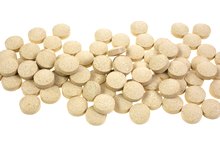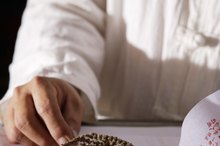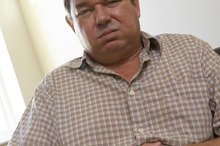What does fact checked mean?
At Healthfully, we strive to deliver objective content that is accurate and up-to-date. Our team periodically reviews articles in order to ensure content quality. The sources cited below consist of evidence from peer-reviewed journals, prominent medical organizations, academic associations, and government data.
The information contained on this site is for informational purposes only, and should not be used as a substitute for the advice of a professional health care provider. Please check with the appropriate physician regarding health questions and concerns. Although we strive to deliver accurate and up-to-date information, no guarantee to that effect is made.
Does Magnesium Help Dissolve Gallstones?
Gallstones are accumulations of solidified material that form inside or near your gallbladder, an organ your body uses to store digestive juices made in the liver. Magnesium is a common dietary and supplemental mineral that you need to support some of your most basic bodily functions. Consumption of dietary magnesium or magnesium supplements will not help dissolve gallstones.
If you are experiencing serious medical symptoms, seek emergency treatment immediately.
The Basics
The purpose of bile is the digestion of the fats in your diet. Most gallstones form from solidified accumulations of cholesterol, while about 20 percent form from solidified accumulations of bilirubin. You can develop these stones if your bile is too rich in bilirubin, cholesterol or bile salts.
Magnesium Facts and Uses
Can Calcium Supplements Cause Gallstones?
Learn More
The magnesium in your diet helps your body initiate the activity of specialized proteins, called enzymes, which you need to trigger an assortment of essential chemical reactions inside and outside your cells.
Dissolution Medications and Techniques
Gallstone dissolution is attempted in one of two ways 1. In a technique called oral dissolution, the patient receives an oral medication made from bile salts, which can gradually dissolve gallstones over a period of time that can last two years or longer. Medications used for this purpose include chenodil, also called chenodeoxycholic acid, and ursodil, also called ursodeoxycholic acid. The second method of gallstone dissolution, called contact dissolution, involves the direct injection of a medication, called methyl tert-butyl ether, into the gallbladder. While this approach can produce rapid gallstone dissolution, it is also experimental, difficult and potentially dangerous. Therefore, doctors rarely use it.
- Gallstone dissolution is attempted in one of two ways 1.
- In a technique called oral dissolution, the patient receives an oral medication made from bile salts, which can gradually dissolve gallstones over a period of time that can last two years or longer.
Considerations
Gallstones, Lecithin & Rowachol
Learn More
The most common treatment for gallstones that trigger painful gallbladder attacks is surgical removal of the gallbladder, according to the National Digestive Diseases Information Clearinghouse. People with painless, asymptomatic gallstones don’t usually need any kind of treatment.Typically, people only undergo gallstone dissolution if they have special situations that make surgery dangerous or impossible. Even then, dissolution is only attempted in people who have cholesterol-based gallstones. If you don’t get your gallbladder surgically removed, gallstones will typically reappear within a period of five years. Consult your doctor for more information on the techniques used to dissolve gallstones.
- The most common treatment for gallstones that trigger painful gallbladder attacks is surgical removal of the gallbladder, according to the National Digestive Diseases Information Clearinghouse.
- Typically, people only undergo gallstone dissolution if they have special situations that make surgery dangerous or impossible.
Related Articles
References
- University of Maryland Medical Center: Gallstones
- Reshetnyak VI. Concept of the pathogenesis and treatment of cholelithiasis. World J Hepatol. 2012;4(2):18-34. doi:10.4254/wjh.v4.i2.18
- Goktas SB, Manukyan M, Selimen D. Evaluation of Factors Affecting the Type of Gallstone. Indian J Surg. 2016;78(1):20-6. doi:10.1007/s12262-015-1313-9
- Behari A, Kapoor VK. Asymptomatic Gallstones (AsGS) - To Treat or Not to?. Indian J Surg. 2012;74(1):4-12. doi:10.1007/s12262-011-0376-5
- Baiu I, Hawn MT. Gallstones and Biliary Colic. JAMA. 2018;320(15):1612. doi:10.1001/jama.2018.11868
- Lee JY, Keane MG, Pereira S. Diagnosis and Treatment of Gallstone Disease. Practitioner. June 2015;259(1783):15-9, 2.
- Mayo Clinic Staff. Gallstones. Mayo Clinic. Updated November 17, 2017.
- National Institute of Diabetes and Digestive and Kidney Diseases. Gallstones. National Institutes of Health. U.S. Department of Health and Human Services. Updated November 2017.
Writer Bio
M. Gideon Hoyle is a writer living outside of Houston. Previously, he produced brochures and a wide variety of other materials for a nonprofit educational foundation. He now specializes in topics related to health, exercise and nutrition, publishing for various websites.








